Searching for Emeralds in Afghanistan
April 14, 2014
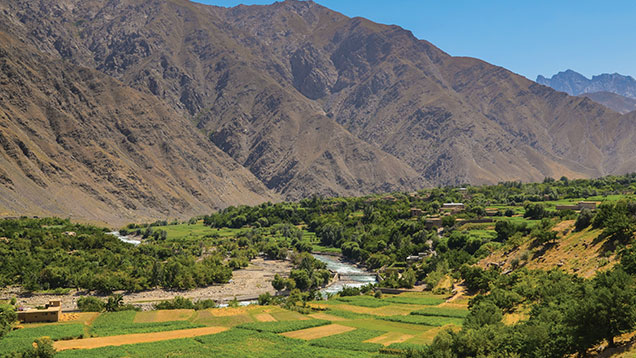
Emerald Adventures
in Afghanistan
in Afghanistan
Lucas’ destination was the remote emerald mines of Panjshir Valley. It’s a place where few dealers go, as it’s a difficult trek with its share of hazards. So before setting out, Lucas and his traveling companion, Arthur Groom of Eternity Emerald (who arranged the trip), met with Abdullah Abdullah, a prominent politician. With Abdullah's support, the two set out on their emerald adventure to the Panjshir Valley located on the Panjshir Province.
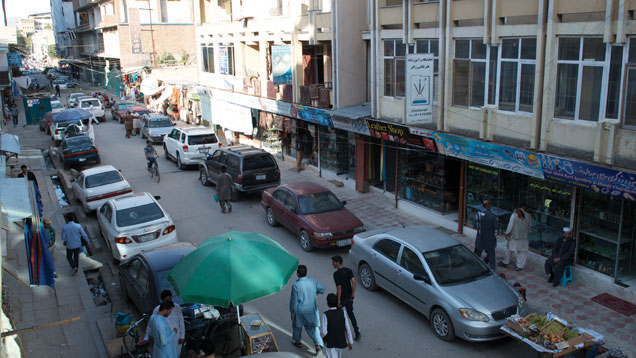
Gem trading happens on Chicken Street, which formerly was an antique and poultry market. Photo © Andy Lucas
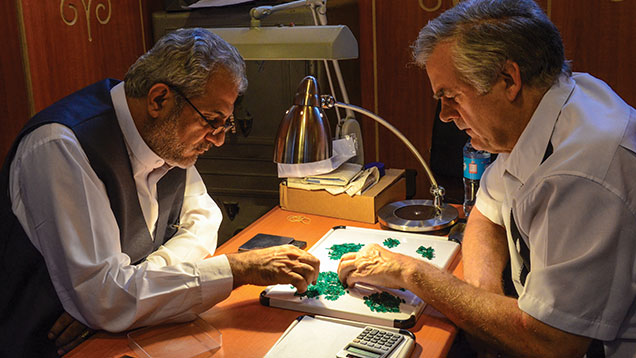
Arthur Groom (right) sits across from a gemstone dealer at Kabul’s Chicken Street – the gem trading center of the country. Groom is dividing a parcel of emerald rough by the quality of the gemstones. Photo © Andy Lucas
Rugged beauty and breathtaking vistas were the welcome to Panjshir Valley. The valley’s name means “five lions,” a tribute to five spiritual brothers who once lived there.“Come as a foe and leave defeated. Come as a friend, and you will find some of the most hospitable and friendly people on the planet,” reflects Lucas about their trip to the Panjshir Valley. “The miners and dealers I traveled with, in fact, were constantly concerned about my welfare,” Lucas recounted with obvious affection.
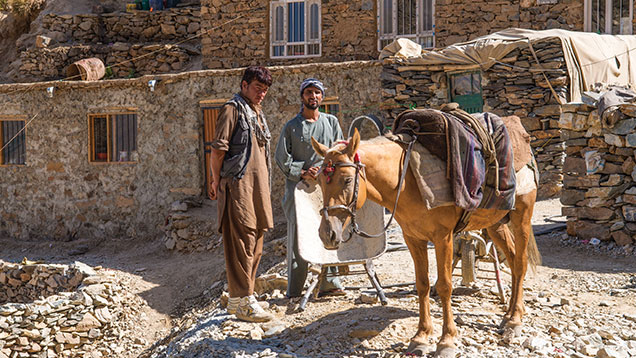
The way to travel the rugged, mountainous terrain is by horse. Photo © Andy Lucas
Upon their arrival at the town of Pawat, Lucas started climbing the steep mountain trails in hopes of reaching the emerald mines before dark. After a four-hour hike to the mining area, he arrived at sunset.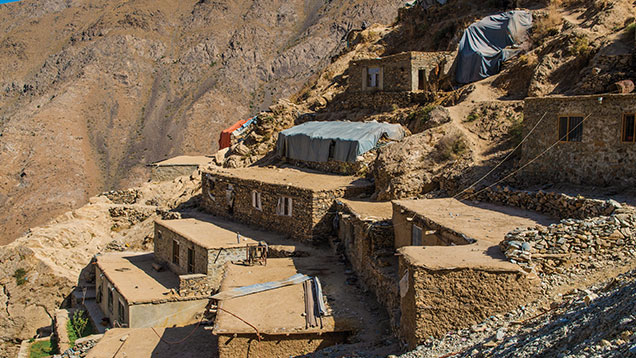
Mountainside homes of the miners. Photo © Andy Lucas
Lucas paints the scene: “A few hundred miners were working at the camp. Most were winding down for the day, but another shift, which worked through the night, was starting. I had a most unusual serenade that evening – the wind whistling through the mountains, punctuated by dynamite blasts from the mines.”Dinner at the mining camp was a meal of fresh lamb, rice, and Nan-e Afghani, the national bread, baked as it has been for centuries. The next day’s breakfast, says Lucas, was just as tasty: fresh goat milk and more Nan-e Afghani.
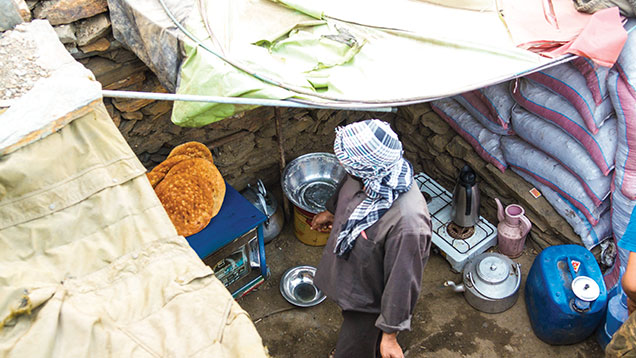
A miner cooking in an open-air kitchen bakes bread for his comrades. Photo © Andy Lucas
Lucas then visited the mining tunnels to watch the mining and ore processing operations. The mining was typical for hard rock deposits – a diesel-powered drill was used to make holes in rock. Charges were placed in them to remove the overburden rock but not to destroy the emeralds – a tricky task!Once the explosives were detonated, miners returned, removed the rocks, and searched for emerald. Promising rocks were sent to a processing area, where they were broken apart by hand tools and washed using screens.
Lucas noted that emerald mining benefits many: “Like many colored gemstone mines, business people provide the capital to purchase food, equipment, and whatever else is needed to run the operation. Profits are divided between the owners and miners. Many of the owners once were miners.”
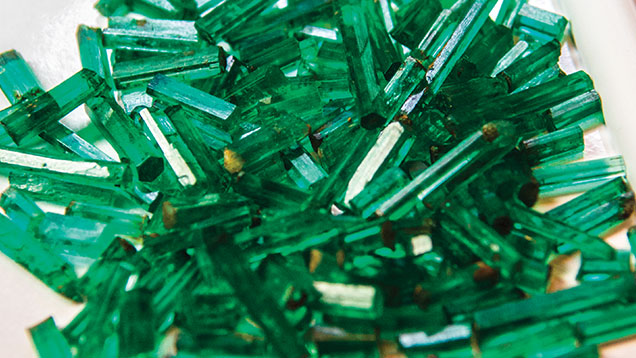
"Pencil" emeralds – named for their shape – mined in the Panjshir Valley. Photo © Andy Lucas
Lucas is now home, incorporating his findings into GIA educational materials. Insights include updated content on the type of gem material coming out of Afghanistan, mining practices, and the nature of the trade. If you’re planning to take the Colored Stones and Gem Identification courses, expect to benefit from Lucas’ travels.A Primer on Emeralds from Afghanistan
- Emeralds from Afghanistan can have excellent color – so much so that they “rival any source,” according to Lucas.
- The shape of Afghanistan emeralds can make for a good retention rate, meaning that less stone is lost when they are cut.
- Even small crystals mined in Afghanistan still tend to have rich colors.
- Longer pieces of rough (called pencils because they have a similar shape to one) are often cut into melee and used in fine watches.
Andy Lucas, GIA GG, GJ, CG, has worked at GIA since 1997, first as a gemology instructor, and presently as manager of Field Gemology. His work has brought him to some of the most remote places on the planet.
A frequent contributor to Gems & Gemology and the GIA website, Lucas is writing a five-article series on China’s gem and jewelry industry, its designers, manufacturing, and jade. He is also writing about a recent trip to Mogok, Myanmar. You can read more about his gemological travels around the world at www.gia.edu
.jpg)


